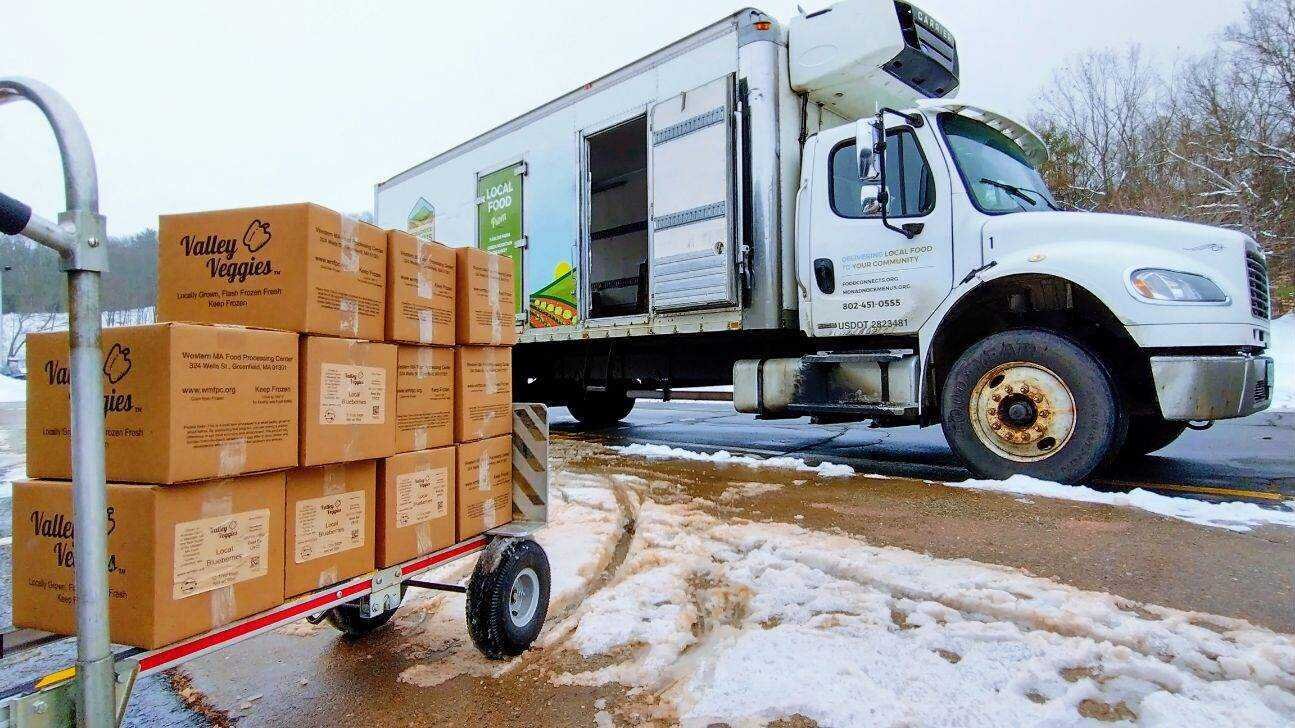When you gather with friends and family around food, what does that look like? Is there a diversity of dishes? Are there more fresh or whole foods than processed items? Where did the food come from—the grocery store down the street or a local farmer? These questions start you down the path to understanding more about food systems.
A food system, outwardly facing, is pretty simple—it’s the path foods take to get to our plates. But, at Food Connects, we understand it is much more than that. It is about the environment, health, equity and access, racial justice, sustainability and climate change, and so much more. And as we are continuing our work to transform the local food system, many people ask, “What does that really mean?” To answer this question, let’s look towards two organizations and their visions for food systems in our region and how our work aligns with these goals.
Let’s start small but mighty with the state of Vermont. Vermont Farm to Plate (VT F2P) recently published its 2021-2030 Vermont Agriculture & Food System Strategic Plan. In this plan it outlines three outcomes to achieve by 2030:
Increase sustainable economic development and create jobs in Vermont’s food and farm sector.
Improve soils, water, and resiliency of the working landscape in the face of climate change.
Improve access to healthy local food for all Vermonters.
Being a Vermont-based entrepreneurial non-profit and working with Vermont farmers, food producers, wholesale buyers, and schools working towards these outcomes are paramount to our organization. Our current work directly impacts the first and third outcomes. Our Food Hub works to expand wholesale markets for farmers and food producers, ensuring that Vermont food is on the shelves at local co-ops, on the plates at local restaurants, and feeding kids’ bellies at local schools. Providing logistical support, including sales and promotion of products and delivering the products to the wholesale customers to our neighboring farms, strengthens their ability to grow and thrive—and in turn, solidifies their place in our local food economy.
One of the specific focuses of the VT F2P strategic plan is on consumer demand. The plan recommends the launch of a Vermont Brand and Marketing Collaborative to improve marketing strategies—all the work to grow local farms and food businesses is futile unless there is demand for it. That’s where Vermont Way Foods (VWF) comes in. VWF grew out of years of collaboration between Food Connects, the Intervale Center, the Center for an Agricultural Economy, and Green Mountain Farm-to-School. VWF directly responds to the need to develop new markets for Vermont products. Vermont is a state known for producing high-quality farm and food products. As VWF grows, it will leverage Vermont’s unique position and align marketing efforts with new values-led consumer preferences (small-scale, transparency, integrity, and quality) to create and increase markets for Vermont foods.
All of this, in turn, ensures access to more local food across the state. As we distribute more and more local food throughout our community, it becomes easier for our neighbors to choose to eat locally and support farms and food producers in our region. Our Farm to School program continues to help schools access this local food through its work with food service directors, policy efforts to support Universal School meals, and the VT Local Purchasing Incentive promotion.
Broadening the scope outside of Vermont, there are region-wide efforts to enact change in our food system. The New England Food Vision held by Food Solutions New England (FSNE) aims to build the “capacity to produce at least 50% of our food by 2060 while supporting healthy food for all, sustainable farming and fishing, and thriving communities.” Their impending updated goal is to reach 30% by 2030. This work, again, is directly aligned with the Food Connects mission to create healthy families, thriving farms, and connected communities and is similarly reflected in the VT F2P Strategic Plan. FSNE holds four core values at the forefront of all food systems frameworks: the rights to food, healthy eating, sustainability, and community stability. As part of this transformation process for our regional food system to become more self-reliant, we must enact substantial change in food policies and embed these values at their core.
As Food Connects steps into 2022, we can ask ourselves, “How can Food Connects support these statewide and regional visions each day?” We commit to continuing the work and partnerships we have established, diligently working to find new wholesale customers for New England farmers and food producers and other food hubs that support their local food economies. We commit to advocating for food access and justice through our work with schools and statewide policies. And we commit to sharing opportunities with our neighbors on how they can be part of food systems conversations and change, inviting all individuals to participate in this work.











